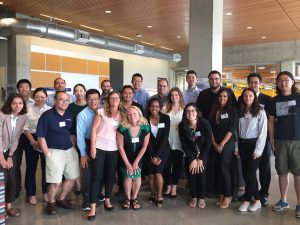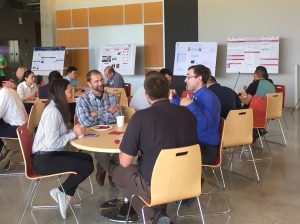
The workshop attracted participants from numerous western states
On August 10-11, 2017, the Center for Environmentally Sustainable Transportation in Cold Climates (CESTiCC) hosted its annual summer workshop at Washington State University (WSU) in Pullman. CESTiCC is a USDOT University Transportation Center, led by a consortium that includes the University of Alaska Fairbanks, Montana State University (WTI) and WSU. The annual forum provides an opportunity for the Center to showcase its projects, and for researchers to exchange ideas on a variety of topics related to environmentally sustainable transportation issues, which spurs collaboration and new directions for upcoming research.
The presentations covered a broad range of topics related to transportation in cold climates, including the properties, durability and longevity of construction materials; winter maintenance practices and products; and impacts of transportation on water and air quality. Laura Fay, WTI’s Winter Maintenance and Effect Program Manager, presented her research on “Lab Testing of Alternative Deicers and Estimation of Remaining Deicers on Pavement,” and WTI Research Scientist Matt Blank gave a presentation on “Sizing Hydraulic Structures in Cold Regions to Balance Fish Passage, Stream Function, and Operation and Maintenance Cost.”

Students present their research and network with professional researchers at poster session
Six graduate students were also invited to discuss their research in a student poster session and competition, providing an excellent professional development opportunity for young researchers. The second day of the event featured tours of the WSU lab facilities, and a field trip to the Kamiak Butte Park, a National Natural Landmark that boasts more than 150 bird, mammal, and vegetation species.
